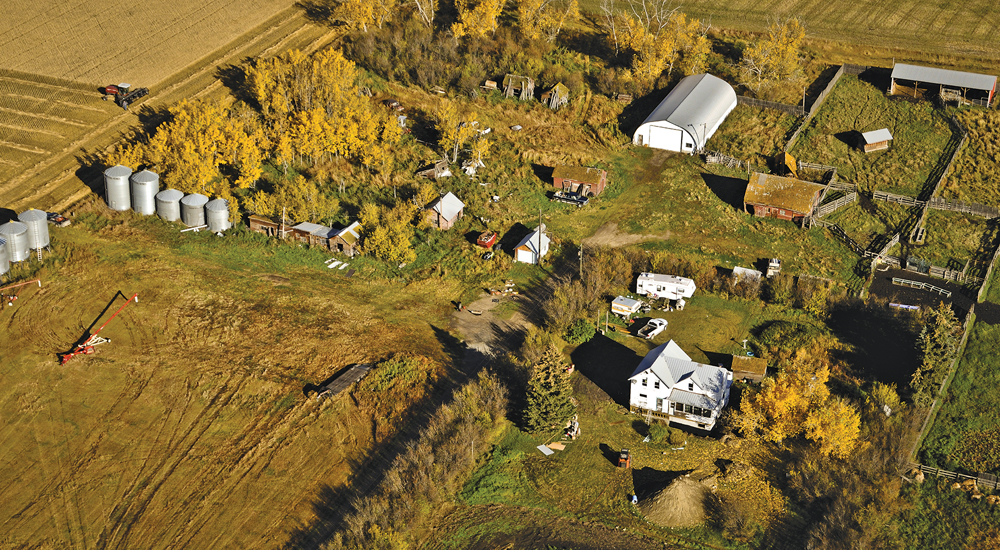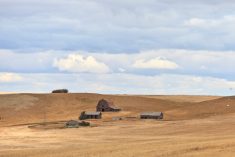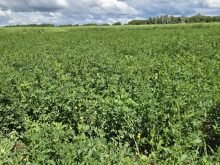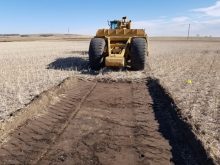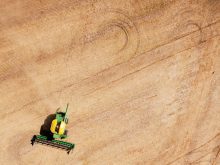It’s been said you never get a second chance to make a good first impression. That’s especially true when it comes to selling the family farm, says a Manitoba real estate agent who specializes in farm property sales.
Maurice Torr, a rural real estate expert with Century 21 Westman Realty in Brandon, says it’s important for families to consider how to present farm property in the best light before putting it up for sale.
“It’s a matter of making your property presentable, making it appealing. People buy something because they like what they see. That’s why the presentation factor is always so important. You only get that one chance to make a first impression,” he says.
Read Also
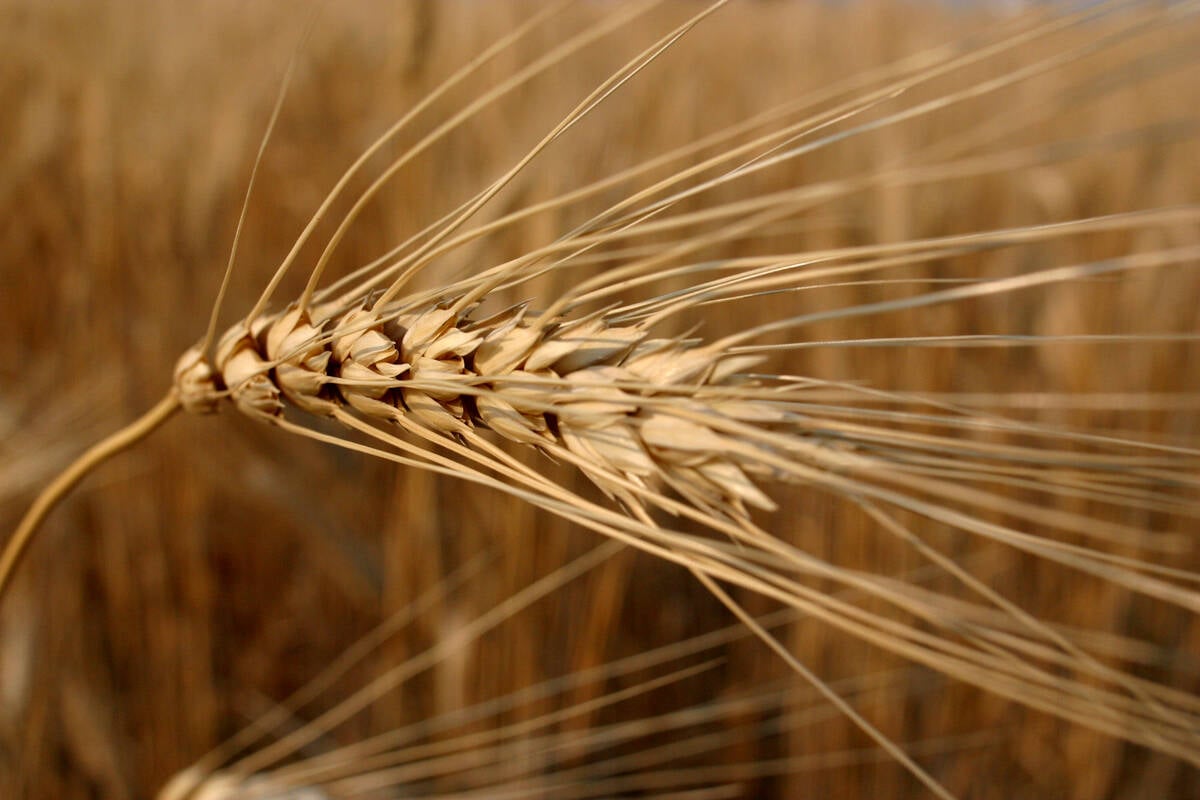
Ergot resistance may open new doors for durum on Prairies
Canada’s first durum variety classified as resistant to ergot may expand the wheat’s acreage in parts of Western Canada where it’s not been typically grown.
“When a farmer is retiring, (the farm) is his biggest asset and that’s going to be his retirement and you naturally want to maximize it. Well, you’re not going to maximize it if it’s not presented right.”
One of the first things to think about is the approach to the farm, Torr says.
If it’s summer, make sure the approach is clean and tidy and nothing jumps out at the buyer. Cut the grass on both sides of the road, get a junk dealer to remove any old machinery, remove oil or chemical pails, and give old buildings a fresh coat of paint and some new shingles.
“I remember many years ago I was going to a property and as I was driving up the road and there was a bunch of shingles missing off the roof. I thought, if the person isn’t on top of things to repair something like that, what else has he left?” Torr recalls.
“Whether it’s farmers or whether it’s people buying a house, it’s probably one of the biggest investments they ever make in their life. You want to feel good about that investment.
“If it’s untidy, the person coming in is going to say, ‘I don’t feel good about this.’ Consequently, unless they can get the farm cheap, they’re probably not going to bother.”
The right time
Tim Hammond, founder and CEO of Hammond Reality at Biggar, Sask., suggests to start planning for sale of a farm at least three years before listing it. That will provide enough time to complete repairs or upgrades and maximize potential tax strategies.
He says spring or summer are the best times to list a farm property, when the growing season is well underway.
“That’s absolutely the best time to showcase your farm,” says Hammond, who estimates farms comprise more than 90 per cent of the properties his company lists.
You may want to consider collecting video footage of the property to show prospective buyers. That means buying a drone for $500 to $1,000 to shoot the footage yourself, or hiring a reputable company to do it for you.
Hammond says video footage can help sell a farm, especially in the wintertime when it might be under a couple of feet of snow.
“Do the drone video in the summer. Take all kinds of video or pictures when it’s green, clean and shiny. That’s absolutely the best time to showcase your farm.”
To build or not to build
Torr recommends delaying any new building construction if you’re planning to put the farm up for sale.
“You may decide it’d be nice to have a workshop, so you’ll put up a heated 40- by 80-foot shop, but the guy who comes in after you may say that ain’t big enough for my combine,” he says.
“Everybody’s got their quirks. That can be a problem if you try and perceive what somebody else wants.”
A farmer may be better off applying a fresh coat of paint to existing buildings or replacing sections that may be damaged or missing to make them more presentable.
Infrastructure
Another priority is to make sure basic infrastructure is in proper working order before prospective buyers tour the property. Torr says that includes everything from grain handling machinery to the lift in the maintenance shop.
Along the same vein, make sure any on-farm facilities are relatively clean and organized in case someone wants to inspect their interior.
“Again, presentation is the key element if you want to maximize your price,” he says.
“It doesn’t have to be perfect. A working farm is an operational farm and you can never get everything perfect.
“If there’s a workshop, you want to be able to see the floor. You don’t want to go into a workshop where everything’s scattered all over the floor. Aesthetically, it creates a negative mindset.”

Farmland focus
Of course, no aspect of a farm operation is more important to a potential buyer than the farmland itself.
That’s why it’s so important it is as presentable as possible, Hammond says. You may want to look at underproductive or underutilized patches of land and consider how they can be made to look better or put back into service.
In the case of areas with highly salinized soil, there are two options: convert them to grasslands or install tile drainage. Grasslands are more aesthetically pleasing and can become a source of additional revenue if what is grown there is sold for feed. Tile drainage helps lower the water table, which draws salt from the surface.
While tile drainage is a far more expensive option, Hammond says more farmers are considering it.
“Once upon a time, it was the same value as farmland so people were hesitant to do that. But now, relative to the cost of farmland, it’s pretty affordable and the returns are there.”
Hammond also recommends burying rock piles and clearing bush to make it easier for the next person to farm and boost the price they are willing to pay.
For those who run a mixed farm with livestock and want to sell it as a grain farm, Torr suggests starting that transition while still farming the land. That will save time for the purchaser and show evidence of land productivity.
“People want to see action,” he says. “If it’s produced and there’s a good stubble, they know it’s OK, whereas if you’ve just worked it up, who knows? It’s kind of a crapshoot then.”

Farm machinery
Perhaps one of the most valuable assets of any farm is its machinery, from tractors and combines to sprayers and grain carts. But what should be done with that fleet when it’s time to sell the farm?
Torr’s advice is to not include it in the sale price. He recommends giving the buyer the option to buy machinery at separately negotiated prices, put it up for sale at an auction, or sell it yourself.
Prospective buyers may prefer a different manufacturer. Adding machinery to the sale will also substantially increase the price.
“If you can bring the price down by $1.2 million because you’re not including any equipment, it’s going to appeal to more people than it will if you leave it all in.”
Farmhouse
At one time, the house was almost an afterthought when a buyer was looking to purchase a farm. That’s no longer the case, says Torr.
“When I first moved here in 1987, there was a lot of those older, run-down, aging properties that people were making do with. They’d never known anything different.
“But we’ve gone through quite a transition in that respect with regard to living accommodations. It is now an important factor. The younger generation… are wanting almost as good a house as they would have if they lived in town.”
That’s why Torr says farm owners may want to consider home upgrades that enhance curb appeal. That can include a new roof or windows.

Renters
Farmers frequently put their property up for rent when they retire rather than immediately selling it.
Torr says that makes sense for many farm owners, but it can pose a challenge if the renter looks to buy it down the road and seeks a discount on the selling price.
If the renter is interested in buying the farm and has the financial capacity to do so, Torr recommends the current owner get an independent evaluation of the property. That way both parties know the fair market value.
He also suggests the two sides use a mediator to avoid potential disputes.
Keep records handy
Hammond says it’s often a good idea to keep farm records handy when a farm is put up for sale and make them available to prospective buyers if asked. Those can include data on farm yields, crop rotations and inputs used.
“Buyers always want to know, what did you grow out here for crops and what were the yields and the input history, what kind of chemicals and fertilizer did you put on it? To have that information prepared for a buyer, that’s really going to go a long ways with them,” he says.

Peace of mind
Hammond says upgrades made to a farm before sale may not always pay off.
“It’s the kind of thing that you don’t always know that you’ll get dollar for dollar back for your investment. But what it does is, it makes it more attractive to a buyer, which can facilitate a quicker transaction … and there’s the peace of mind just knowing this deal is going to happen.”
Still, Torr cautions that families must be patient when selling. It can sometimes take years for a transaction to be completed, which is why families plan for a sale while they are still farming.


